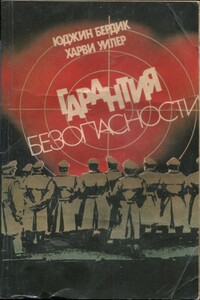Chameleon People - [8]
I did not expect the question to cause any tension or drama. After all, as a politician and businessman, Per Johan Fredriksen might have been in the area for any number of reasons.
However, my query was met with absolute silence. Vera Fredriksen looked even paler and chewed even more frenetically and her mother sank even deeper into the cushions and sofa. It was certainly not my intention to upset any of them. So I turned to the still unruffled Johan Fredriksen.
‘Strictly speaking, we are not sure why my father was at Majorstuen yesterday evening,’ he said, in the same voice, but with more deliberation.
‘But you have an idea?’ I guessed.
Johan Fredriksen did not answer. He looked questioningly at his mother. I turned to her too. As, I saw out of the corner of my eye, did Vera Fredriksen.
The widow gave in to the pressure of our combined attention. She let out a quiet sigh, and sank a little more into the sofa, then said: ‘No, we don’t know. But she lives there, so it’s reasonable to assume that he was either on his way to or from his mistress.’
These hushed words blasted into the otherwise still room like cannon fire. The picture that had been painted of Per Johan Fredriksen as a kind family man exploded in front of my eyes, though his smile in the portrait on the wall was just as friendly and reassuring. His wife’s mask fell at the same time.
‘You mustn’t think badly of my husband. We all have our weaknesses. And his only weakness that we knew of was this, his physical attraction to younger women and consequent breaches of the wedding vow. He had so many other good qualities that we forgave him this.’
The son and daughter both nodded. Suddenly the family appeared to be united.
I found the situation vaguely uncomfortable, but also increasingly interesting. And I heard myself ask whether that meant he had had several mistresses.
Oda Fredriksen sighed, but she sat up when she answered. ‘My greatest failure as a wife is that I did not keep my looks well enough to stop him from falling into the arms of younger women. But my greatest triumph is that he always came back to me, and remained my husband until death parted us. Yes, he did have more than one mistress. But for the past few years, there has only been the one in Majorstuen – as far as we know. Surely there is no reason to believe it has anything to do with my husband’s murder, and I hope that as I am grieving, I will not need to spend a lot of time and energy thinking over this. Most of all, I hope that the papers will not get wind of it.’
The latter was said in a choked voice.
I realized that the topic was very difficult for Mrs Fredriksen on a day like today and I did not want to bother her with any more questions. However, I was increasingly intrigued by the clearly complex man in the painting above me and was not as certain that his mistress had nothing to do with the case. There could well be a link, for example, if his mistress happened to have a teenage son with a speech impediment.
So I said I would leave them in peace to mourn and that there was no reason why this aspect of the deceased’s private life need reach the press. I was, however, obliged to ask for the mistress’s name so that I could rule her out of the case.
‘I have chosen not to know her name or anything else about her. But it is quite possible that my children can help you there,’ the widow replied with another sigh.
I looked questioningly at her son. He took a visiting card from his wallet and wrote down a name and address on the back of it.
‘I have never been there or seen the woman. My father wanted me to know who she was in case anything unexpected should happen,’ he explained curtly, and handed me the card.
I took it and read: Harriet Henriksen, 53B Jacob Aall’s Street. The name was completely unknown, but the street was familiar to me and was undeniably in Majorstuen.
I found it interesting that not only did Per Johan Fredriksen have a mistress, but he also had had reason to think that the unexpected might happen. So, having said goodbye to his family and walked back down the long drive, I drove directly to his last known mistress.
V
In sharp contrast to Per Johan Fredriksen’s green and pleasant home in Bygdøy, 53B Jacob Aall’s Street was a grey, tired building in Majorstuen. I quickly found H. Henriksen on the list of inhabitants and rang the bell three times without getting any response. But then, as I turned to leave, the intercom crackled to life. ‘Who’s there?’ asked a quiet, tense woman’s voice.
I found the situation awkward, but had a murder investigation to follow up. So I looked around quickly, then whispered that I was from the police and that I had some routine questions to ask her in connection with a death.
There was a few moments’ silence. Then the voice said: ‘Please come up.’ She did not sound entirely convincing, but I could understand that she might not be in the best frame of mind today and that the last thing she wanted was a visit from the police.
There was another little surprise waiting for me when the door to the flat on the second floor opened. I had obviously underestimated Per Johan Fredriksen and had assumed that his current mistress would be at least forty-five. But I was wrong. It was not easy to guess Harriet Henriksen’s age, but I would not have protested if someone said that she was thirty. Her movements were soft as a cat and there was not a wrinkle on her smooth face, which gave her an almost doll-like appearance.
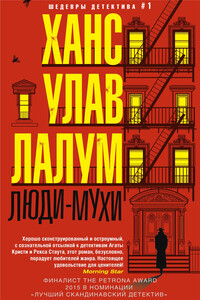
Убит бывший лидер норвежского Сопротивления и бывший член кабинета министров Харальд Олесен. Его тело обнаружено в запертой квартире, следов взлома нет, орудие убийства отсутствует. На звук выстрела к двери Олесена сбежались все соседи, но никого не увидели. Инспектор уголовного розыска Колбьёрн Кристиансен считает, что убийство, скорее всего, совершил кто-то из них. Более того, он полагает, что их показания лживы.
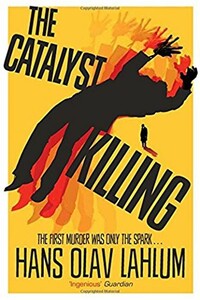
The third mystery in the hugely compelling, bestselling international crime series from Norway's answer to Agatha Christie, Hans Olav Lahlum, The Catalyst Killing will have you guessing to the final clue. The first murder was only the spark… 1970: Inspector Kolbjorn Kristiansen, known as K2, witnesses a young woman desperately trying to board a train only to have the doors close before her face. The next time he sees her, she is dead… As K2 investigates, with the help of his precocious young assistant Patricia, he discovers that the story behind Marie Morgenstierne's murder really began two years ago, when a group of politically active young people set out on a walking tour in the mountains.
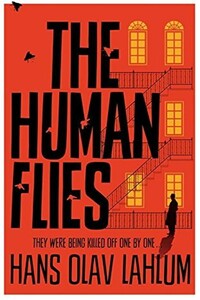
Oslo, 1968: ambitious young detective Inspector Kolbjorn Kristiansen is called to an apartment block, where a man has been found murdered. The victim, Harald Olesen, was a legendary hero of the Resistance during the Nazi occupation, and at first it is difficult to imagine who could have wanted him dead. But as Detective Inspector Kolbjorn Kristiansen (known as K2) begins to investigate, it seems clear that the murderer could only be one of Olesen's fellow tenants in the building. Soon, with the help of Patricia – a brilliant young woman confined to a wheelchair following a terrible accident – K2 will begin to untangle the web of lies surrounding Olesen's neighbors; each of whom, it seems, had their own reasons for wanting Olesen dead.
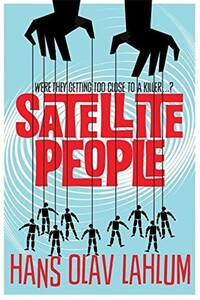
A gripping, evocative, and ingenious mystery which pays homage to Agatha Christie, Satellite People is the second Norwegian mystery in Hans Olav Lahlum's series. Oslo, 1969: When a wealthy man collapses and dies during a dinner party, Norwegian Police Inspector Kolbjorn Kristiansen, known as K2, is left shaken. For the victim, Magdalon Schelderup, a multimillionaire businessman and former resistance fighter, had contacted him only the day before, fearing for his life. It soon becomes clear that every one of Schelderup's 10 dinner guests is a suspect in the case.
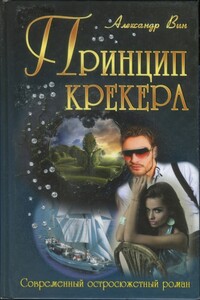
Крепкая дружба Глеба Никитина и Валеры Ульянова завязалась еще во время службы на яхте «Балтика», однако их жизненные пути разошлись: Глеб остался в России, а его товарищ — на Антигуа. Однажды Глеб получает странное электронное письмо, из которого узнает немыслимые вещи: его, казалось бы безобидный, надежный Валерка обвиняется в убийстве и объявлен в розыск. Глеб отправляется на Антигуа, чтобы доказать невиновность друга, и становится участником запутанного расследования…

Жанна убеждала себя: все происходящие неприятности временны. Но эти странные звонки и слежка… Кто-то явно решил превратить ее жизнь в кошмар. Она боялась обратиться за помощью. Боялась, что кто-то начнет копаться в ее прошлом. Следователь Катя Скрипковская решила помочь Жанне. Оказалось, что и звонит, и следит за своей жертвой женщина. Между ними есть некая связь, которую Жанна держит в тайне. Но почему? Катя жаждет понять, какую игру затеяла женщина. Что или кого так тщательно скрывает Жанна? И кто она на самом деле?…

Литературный клуб библиотеки имени Александра Грина славится активной литературно-светской жизнью: яркие презентации, встречи с незаурядными творческими личностями, бурные дискуссии, милейшие дружеские посиделки. На одном из таких вечеров происходит убийство. Личность погибшего, склочника и скандалиста, не вызывает особых симпатий тесного клубного кружка, однако какое несмываемое пятно на безупречной репутации библиотеки! Таня Нестерова, соратница, подруга и заместитель директора Бэллы Мироновой, понимает, что полиции с разгадкой не справиться: убийца не случайный гость «со стороны», а кто-то из ближнего круга, а причина убийства кроется в глубине запутанного клубка тайных любовных связей, ненависти, предательства и уязвленного самолюбия.
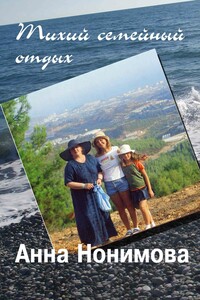
Детективная повесть “Тихий семейный отдых” будет интересна людям разных возрастов, это семейное чтение в самом прямом смысле слова. Захватывающий сюжет, ироничность автора, красота языка, — всё есть в этой книге. Приятного чтения!

